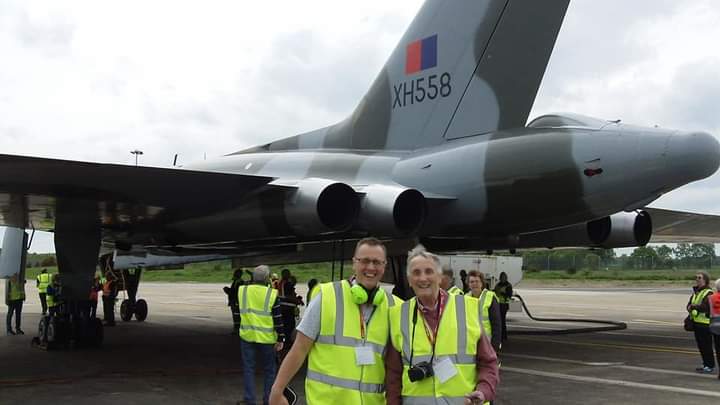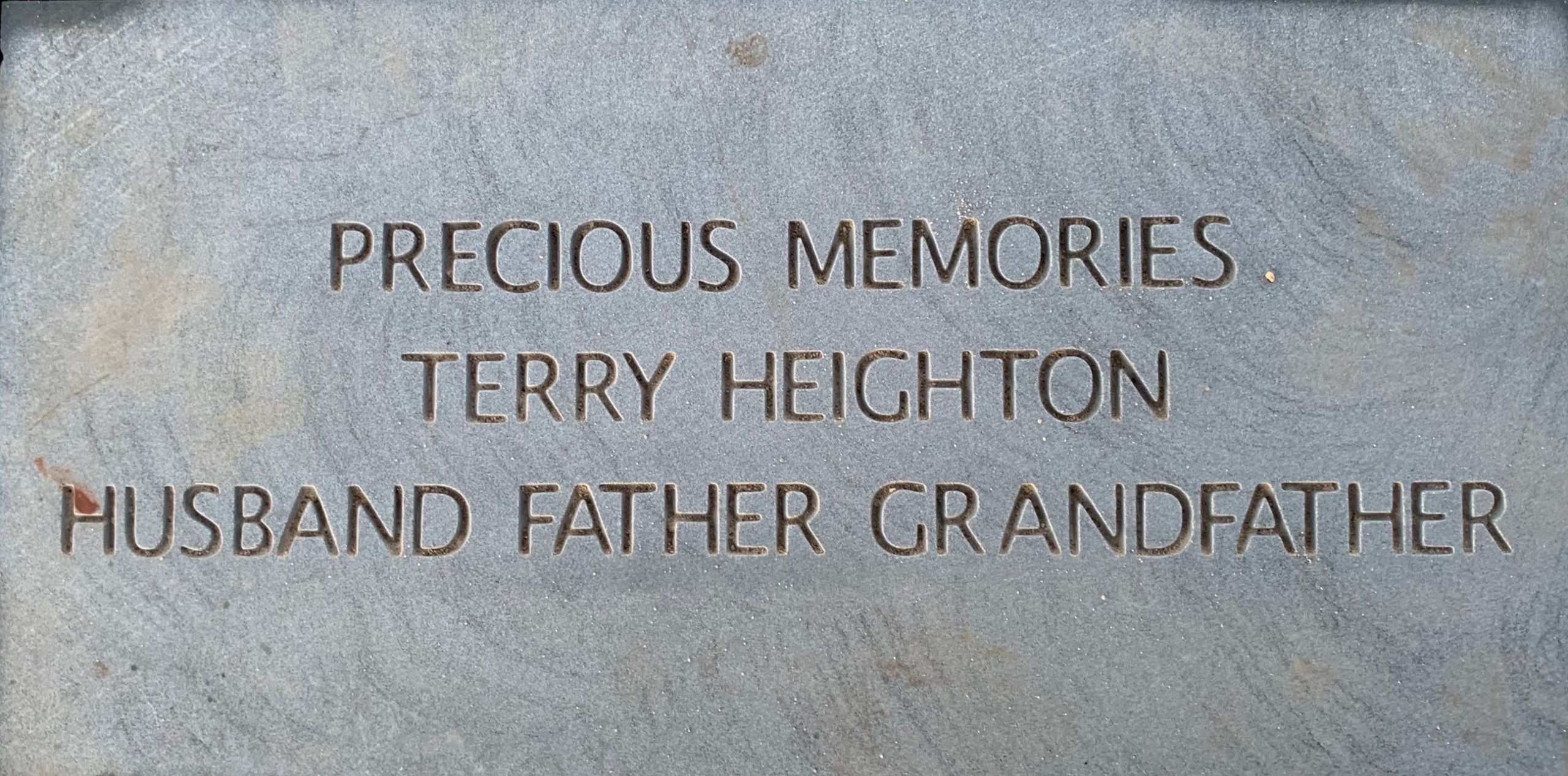Terry Heighton by his son, Chris
Between 2012 and 2015, I was fortunate to work as part of the development team that established the International Bomber Command Centre, where I led the commissioning process for the Spire. Without doubt, something I was incredibly proud to be part of, and one of the most rewarding and memorable projects I’ve ever worked on.
In 2019, I re-visited the IBCC with my Dad, who at the time, was really quite seriously ill, and with a terminal diagnosis. We had always planned to visit the centre, and particularly the Spire, as it was something that Dad always wanted to experience for himself – Not least because of my connection to the project, as this was something we talked about a great deal, but also because of our shared love of all thing’s aviation, and particularly historic aircraft. Indeed, it was through talking about Bomber Command, the IBCC, my role in the project, and generally being two plane spotters, that we were able to find common ground between us, as we were quite different people, with different interests, and who followed vastly different career paths, yet we created some unbeatable father and son moments, that I am now in the process of repeating with my own son, who thankfully, also has the aviation genes!

On the day of our visit, Dad was now completely wheelchair bound, with oxygen cylinders, which presented some logistical challenges, however nothing insurmountable. Having explored the exhibition, we discovered the digital archive station in the foyer, and although I hadn’t come across a ‘Heighton’ or distant relative within the losses database in all the time I worked on the project, Dad was adamant that we should search anyway – His illness certainly hadn’t affected his stubbornness! To our amazement, we discovered Sgt. Hubert Heighton, who was a pilot, stationed at RAF Leeming with 10 Squadron, and who flew the Armstrong Whitely V Bomber.
On the night of 15th /16th May 1941, the Whitely V crews were one of a number of 10 Squadron crews tasked with bombing Hannover. They took off from RAF Leeming at 2217 and bombed the target area from 14,000 feet at 0117. Hubert’s Whitely V was attacked by an enemy aircraft at around the same time, however the crew fired a red signal flare and the enemy aircraft broke off its attack. The searchlights in which the aircraft was being held, were switched off. The crew were able to make a safe return to base at 0445 and a number of bullet holes were found in the aircraft.
Later that summer, on the evening of 7th/8th July 1941, Hubert, Sergeant Harris Black, Flight Sergeant Robert Thompson, and Flight Sergeant Owen Lucas, were flying back to Leeming in Whitely Z6816 from operations in Osnabrück, and according to the records I’ve discovered, the Whitely V unexpectedly crashed into the North Sea, off Flamborough Head, with no survivors and their bodies were never recovered.
The events that led up to the crash remain a mystery, certainly to me, yet this is a story that I have continued to explore and pursue, and one that continues to twist and turn, as it unravels.
Dad and I were speechless at our discovery, and proceeded through the doors, along the Ribbon of Remembrance to the foot of the Spire, where I turned Dad’s wheelchair to face the iconic view of the city, that we had talked about so many times. Dad was overwhelmed and overcome with emotion in a way that I have never seen before, which was quite remarkable, and he insisted on standing, or at least trying to stand by himself, to pay his respects to all who served. As he said himself, ‘I simply cannot be here, right now, with you, and stay sat down’. It was a huge effort for him, and took every last bit of energy that he had, but he managed to do it, and largely by himself.
We stood together in the silence for what felt like hours, until I noticed that Dad was really struggling and about to fall, so we quickly moved the wheelchair back into place, and we began to walk through the Walls of Names, talking about who these people might have been, the families they left behind, and whether their ancestors even know about their sacrifice?
We slowly walked around to Panel 45 and found Hubert, which was quite a moving experience for both of us, where we placed a poppy by his name, as so many families do throughout the year. Over lunch in the café, we talked for hours about the Chadwick Centre, the Spire, a very nerdy discussion about aircraft, and the Spire opening ceremony, including the now famous flypast from the Vulcan that caught the sun exactly at the right moment to create a shining Avro Delta Wing over the Spire -Something really quite incredible, that I will never forget.
Sadly, our day together at the IBCC would prove to be the last day we spent together, as my Dad passed away shortly afterwards.
My Mum and I are both IBCC annual pass holders, and each year, on the anniversary of Dad’s passing, we meet at the IBCC and sit on the benches looking out to the Spire, to remember and celebrate Dad’s life.
Our stone on the Ribbon of Remembrance is absolutely dedicated to Dad’s love of aviation, and indeed of the Spire, to create a space that we as a family can continue to return to, and hopefully, where Dad’s great grandchildren, can do the same, long into the future. However, it also captures, and preserves the stories of that remarkable day of discovery we spent together, Hubert Heighton’s story, the importance of the IBCC to our family, and to ensure these stories remain alive and kicking, and in the hearts of future generations of Heightons.
For me, I’ve been inspired to embark on a new writing project to tell mine, Dad’s and Hubert’s story, and how, in the most unlikely of circumstances, we were able to forge a now unbreakable bond, across generations of our family.
In many respects, my connection with the IBCC, after nearly 10 years since I first joined the project, has now come full circle.
To find out about Hubert Heighton, click here




